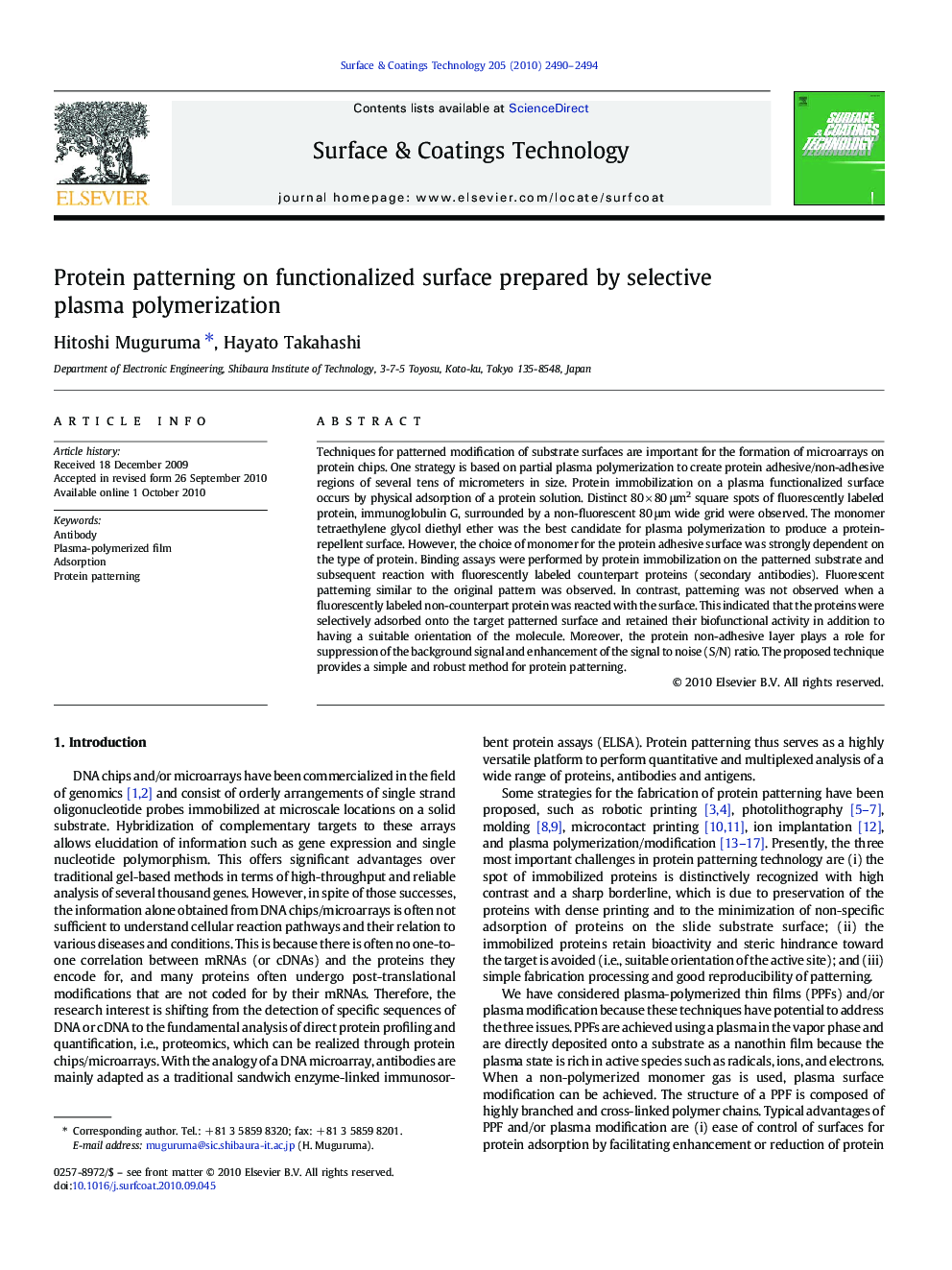| Article ID | Journal | Published Year | Pages | File Type |
|---|---|---|---|---|
| 10668719 | Surface and Coatings Technology | 2010 | 5 Pages |
Abstract
Techniques for patterned modification of substrate surfaces are important for the formation of microarrays on protein chips. One strategy is based on partial plasma polymerization to create protein adhesive/non-adhesive regions of several tens of micrometers in size. Protein immobilization on a plasma functionalized surface occurs by physical adsorption of a protein solution. Distinct 80 Ã 80 μm2 square spots of fluorescently labeled protein, immunoglobulin G, surrounded by a non-fluorescent 80 μm wide grid were observed. The monomer tetraethylene glycol diethyl ether was the best candidate for plasma polymerization to produce a protein-repellent surface. However, the choice of monomer for the protein adhesive surface was strongly dependent on the type of protein. Binding assays were performed by protein immobilization on the patterned substrate and subsequent reaction with fluorescently labeled counterpart proteins (secondary antibodies). Fluorescent patterning similar to the original pattern was observed. In contrast, patterning was not observed when a fluorescently labeled non-counterpart protein was reacted with the surface. This indicated that the proteins were selectively adsorbed onto the target patterned surface and retained their biofunctional activity in addition to having a suitable orientation of the molecule. Moreover, the protein non-adhesive layer plays a role for suppression of the background signal and enhancement of the signal to noise (S/N) ratio. The proposed technique provides a simple and robust method for protein patterning.
Related Topics
Physical Sciences and Engineering
Materials Science
Nanotechnology
Authors
Hitoshi Muguruma, Hayato Takahashi,
